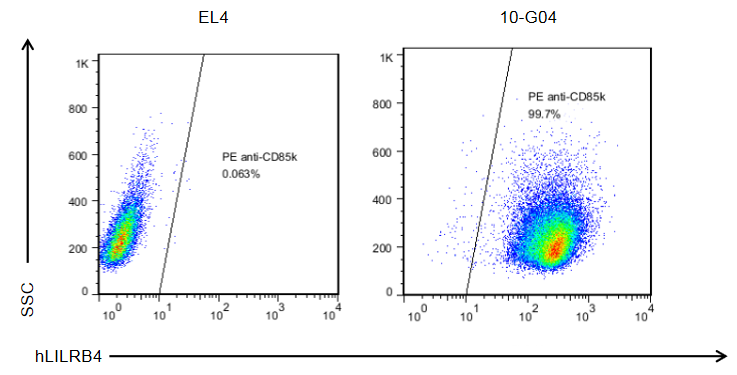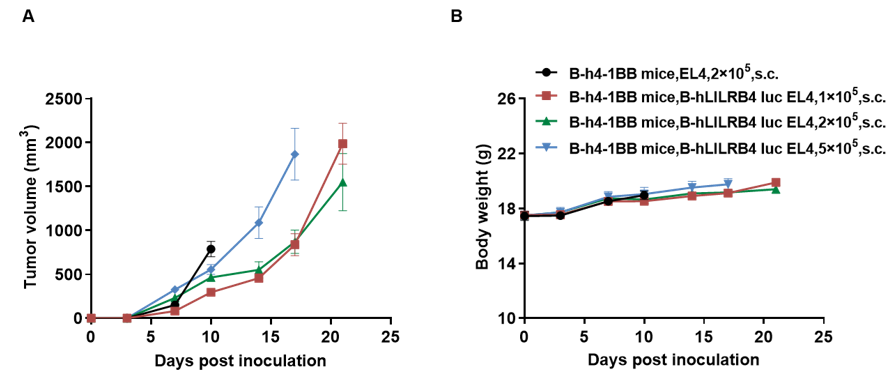|
Common name |
B-hLILRB4 luc EL4 | Catalog number | 111915 |
| Aliases | / | Disease | Lymphoma |
|
Organism |
Mouse |
Strain | C57BL/6 |
| Tissue types | Lymphoma | Tissue | T lymphocyte |
Description
The human LILRB4(CD85K) coding sequence was inserted to mouse Hipp11(H11) allele. Human LILRB4 is highly expressed on the surface of B-hLILRB4 luc EL4 cells.
Application
B-hLILRB4 luc EL4 cells have the capability to establish tumors in vivo and can be used for efficacy studies.
Targeting strategy
Phenotypic Analysis

The luminescence signal intensity of B-hLILRB4 luc EL4 cells. The luminescence intensity was detected by Bright-GloTM luciferase Assay System (Promega, Cat E2610), and B-hLILRB4 luc EL4 cells have strong luminescence signal.
Protein expression analysis


Tumor growth and in vivo imaging of B-hLILRB4 luc EL4. B-hLILRB4 luc EL4 cells (2x105) were injected by tail vein into C57BL/6 mice. Signal intensity and body weight were measured twice a week. (A) Imaging was performed on days 3, 7, 10, 14, and 17, (B) Mice body weight (Mean ± SEM). B-hLILRB4 luc EL4 cells can be used for in vivo efficacy evaluation.
Tumor growth curve & Body weight changes

Subcutaneous homograft tumor growth of B-hLILRB4 luc EL4 cells. B-hLILRB4 luc EL4 cells and wild-type EL4 cells were subcutaneously implanted into B-h4-1BB mice (female, 6-week-old, n=6). Tumor volume and body weight were measured twice a week. (A) Average tumor volume. (B) Body weight. Volume was expressed in mm3 using the formula: V=0.5 X long diameter X short diameter2. As shown in panel A, B-hLILRB4 luc EL4 cells were able to establish tumors in vivo and can be used for efficacy studies. Values are expressed as mean ± SEM.











